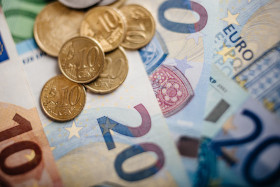The euro is trading relatively subdued against many of its G10 currency rivals on Tuesday, despite the European Union (EU) reaching a breakthrough agreement over a new $2 trillion fiscal stimulus and relief plan. Following marathon sessions of 27 EU governments, officials were finally able to compromise on this monumental and unprecedented spending package that is aimed at resuscitating the eurozone economy. Will it be enough to stimulate the eurozone that had already been anemic before the coronavirus pandemic?
European Commission officials will soon move ahead with executing the Recovery Fund, an $857 billion initiative comprised of loans and grants that will be distributed to dozens of countries and sectors. European Council President Charles Michel called the agreement a âpivotal momentâ for Europe, while European Commission President Ursula von der Leyen believes the region could âcome out stronger from the crisis.â
The proposal will tap public markets for funding, which will be repaid by 2058. It will also involve adding new taxes, such as a non-recycled plastic waste levy, a carbon border adjustment mechanism, and a digital duty. Moreover, member states can come up with proposals on how they will invest the new funds. But these proposals need to be first approved by their European partners.
The fiscal measures did not end there. The EU also confirmed its next budget would total more than $1 trillion, which will help fund its post-coronavirus initiative. This brings the total between these two spending schemes to more than $2 trillion.
Analysts were surprised that the EU established an agreement so soon. Although it was reported on Monday that some progress had been made, diplomats suggested that they could abandon negotiations and restart talks next month. Because of this, Goldman Sachs analysts think that the eurozone could successfully recover from the COVID-19 public health crisis.
But the euro is not exploding on the news, potentially because forex markets had already priced in a deal for the currency. Whatever the case, many investors remain bullish on the euro, which is applying pressure on the US dollar. The US Dollar Index, which measures the buck against a basket of currencies, tumbled 0.25% to 95.59.
The EUR/USD currency pair rose 0.08% to 1.1466, from an opening of 1.1450, at 14:15 GMT on Tuesday. The EUR/JPY fell 0.16% to 122.68, from an opening of 122.82.
If you have any questions, comments, or opinions regarding the Euro, feel free to post them using the commentary form below.
Euro Mixed As EU Reaches Breakthrough in Recovery Fund
